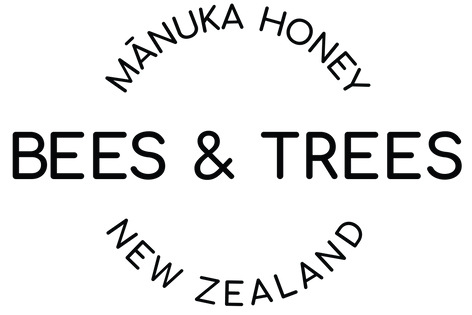1.- What is MGO (Methylglyoxal)?
Methylglyoxal is a naturally occurring organic compound found in varying concentrations in Manuka honey. It is commonly abbreviated as either MG or MGO. A direct correlation exists between the MG level of the honey and the antibacterial property of the honey. Higher MG concentrations in Manuka honey, therefore, provide more efficacy or potency in regard to the overall health, wellness, and healing properties of the honey.
All Manuka honey, when produced in New Zealand, is tested first and foremost for its MG levels. MG is measured in parts per million (ppm) or, stated another way, milligrams per kilogram (mg/kg). Test results for MG content can range from about 85 to over 1000 mg/kg.
2.- How was Methylglyoxal Discovered?

Until the early 1990s, Manuka honey was just a really nice honey produced from flowering native New Zealand trees. That’s when Dr. Peter Molan of the Waikato University in New Zealand, through his research, discovered a very unique and special property of Manuka honey. Dr. Molan was studying the antibacterial properties of honeys. Normally these properties are attributed to a natural mild hydrogen peroxide formed by the enzyme glucose oxidase that bees add to nectar as they digest it and turn it into honey.
However, this "peroxide activity" is easily destroyed by exposure to fluids, heat, and sunlight. Dr. Molan discovered that Manuka honey had a different property, what he termed a "non-peroxide activity" (NPA), which was more potent and stable, opening up the possibility of a wide range of uses.
Later, Professor Thomas Henle at the Technical University of Dresden in Germany set out to isolate what in Manuka honey was producing this more potent and stable antibacterial effect. The compound methylglyoxal (MG/MGO) was isolated as having a direct correlation to the NPA or UMF rating of Manuka honey.
3.- How is MGO Created in Manuka Honey?
MGO is created during the digestive process as bees break down manuka nectar from manuka flowers with enzymes in their stomach. There is a naturally occurring compound in the nectar called dihydroxyacetone (DHA), which is converted to MGO in the digestion process. [1]
“The non-peroxide antibacterial activity of mānuka (Leptospermum scoparium, Myrtaceae) honey results from the chemical conversion of the triose sugar dihydroxyacetone (DHA).”
The process of conversion extends even after the honey is collected. For about 1 -2 years, as DHA levels continue increasing, the MGO concentration also continues to increase in stored Manuka honey.
4.- How is MGO tested in Manuka Honey?
All Manuka honey, when produced in New Zealand, is tested first and foremost for its MG levels. MG is measured in parts per million (ppm) or, stated another way, milligrams per kilogram (mg/kg). Test results for MG content can range from about 85 to over 1000 mg/kg.
5.- What is UMF?
The term "Unique Manuka Factor," or UMF, was coined (and trademarked) to describe this property which was originally based on its NPA test result.
UMF is registered and controlled by the UMF Honey Association (UMFHA).
6.- UMF vs MG(MGO)

MG/MGO is the actual concentration of the active ingredient Methylglyoxal, based on lab test results. UMF is a grading system that is based on a direct lookup table that correlates an MG concentration with a UMF rating. UMF is an acronym meaning Unique Manuka Factor. It correlates directly to the measurement of MG (MGO) levels but also includes additional quality & authenticity checks.
MGO/MG is often displayed on product packaging since it shows methylglyoxal content. and provides a clearer, no-nonsense indication of MG (MGO) content.
7.- What is NPA in Manuka Honey?

All honey has naturally occurring antibacterial activity due to the conversion of glucose oxidase to hydrogen peroxide. This antibacterial activity is referred to as peroxide activity (PA). The term non-peroxide activity is used to describe the effect that was first discovered by Peter Molan in his research work. A NPA value as shown on a honey test report, will be equivalent to the UMF rating for a given MG level. For example, a 550 MG will have an NPA of 15, and if the company selling the honey is a UMF association member, it will show a UMF 15 on the label.
As we've explored the scientific underpinnings of Manuka honey's ratings and benefits through MGO and UMF, it's also important to understand the regional differences that contribute to these properties. To see how New Zealand Manuka honey compares with its Australian counterpart, and why these distinctions matter, explore the differences between New Zealand and Australian Manuka honey.
Learn more on how to buy Manuka honey based on MG, UMF and NPA.

More resources:
-
*In this video from 2014, the late Professor Peter Molan takes the viewer into his laboratory to show the special non-peroxide antibacterial activity of Manuka honey versus other honey. Why you need the right sort of activity in Manuka honey
-
For a more in-depth look at the unique characteristics of Manuka honey, you can read this article by Steve Howse, Analytica Laboratories, published in The “New Zealand Beekeeper.” DHA and MGO: The Most Common Testing in Manuka Honey.







